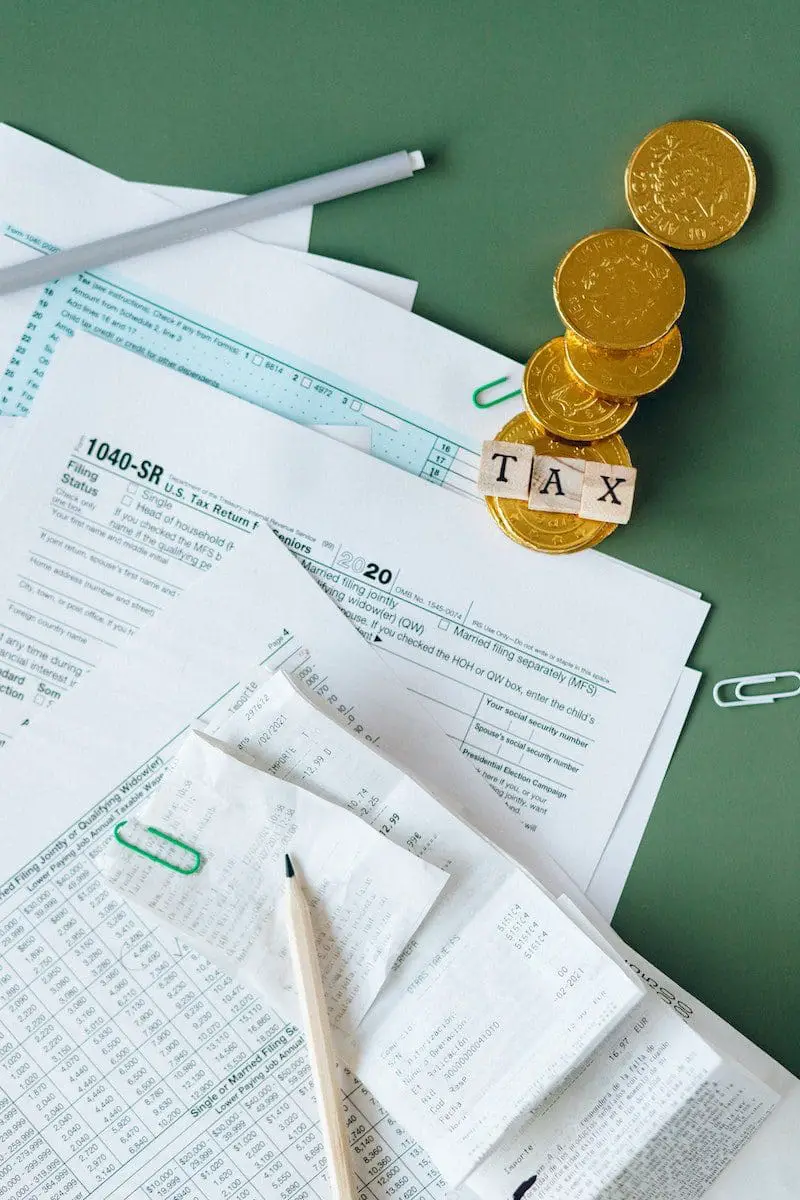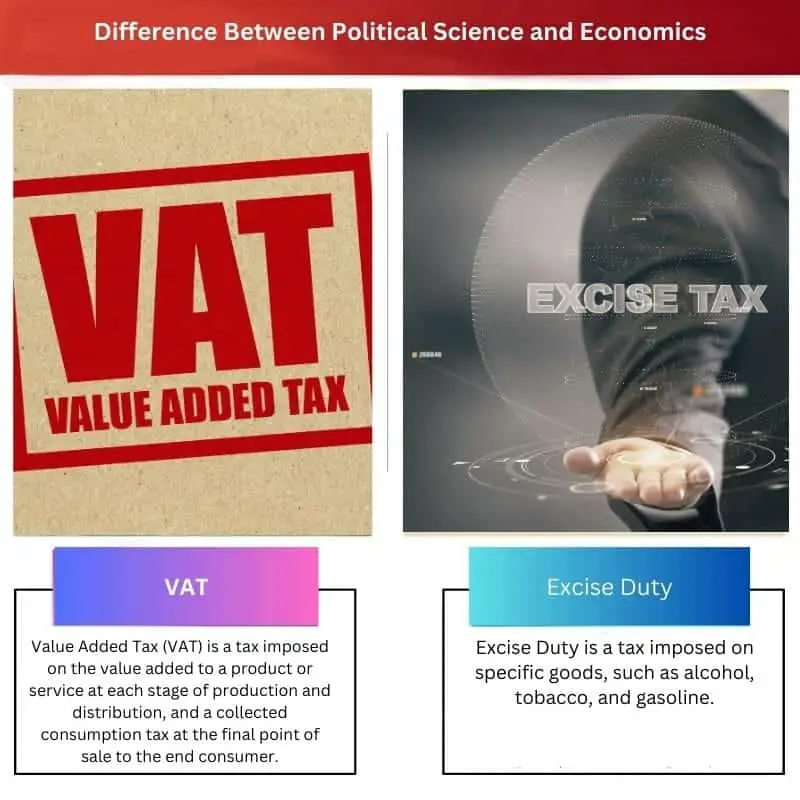The system of taxes is practised in almost every country in the world. The most common reason is to generate revenues for government expenditures.
Taxes may be levied on the federal level, local and state levels. It is essential to understand the difference between various types of taxes to understand our country’s infrastructure.
Key Takeaways
- VAT is a tax on the value added at each production stage, while excise duty is a tax on specific goods or services, at production or importation.
- VAT is charged as a percentage of the final price of a product or service, while excise duty is charged as a fixed amount per unit of the goods or services.
- VAT is a more general tax that applies to a wide range of goods and services, while excise duty is applied to specific products like alcohol, tobacco, and fuel.
VAT vs Excise Duty
Value Added Tax (VAT) is a tax imposed on the value added to a product or service at each stage of production and distribution, and a collected consumption tax at the final point of sale to the end consumer. Excise Duty is a tax imposed on specific goods, such as alcohol, tobacco, and gasoline.

Excise duty is the tax added to the manufacturing of goods. It is imposed at the time of manufacturing and not at the time of sale, unlike VAT. Their difference is best understood by this example here.
When the company is making soap, then after it is made, it has to pay excise duty even before selling the soap. The comparison table below shows the other features that differentiate between VAT and excise duty.
Comparison Table
| Parameter of Comparison | VAT | Excise Duty |
|---|---|---|
| Definition | Tax is added on goods as it travels from the point of production to the end of the sale. | Tax added on the manufacturing of stocks. |
| Imposed | After the product has entered the final stage of selling. | After the product has been manufactured. |
| Paid by | Customers who buy the product. | The company that is manufacturing the product. |
| Implementation | Method of collection and timing of collection. | Ad valorem and specific. |
| Examples | Biscuits, candy, soap, toothpaste, shoes. | Tobacco, alcohol, fuel. |
What is VAT?
VAT stands for value-added tax. It is the amount of cost added to the product after it has reached the final stage of trading. The VAT system is exercised in over 160 countries around the world.
The customer only needs to pay VAT for the end product, not the raw materials required to manufacture the product.
The state decides the tax rate as a percentage of the end product. It is implemented in two ways:
- Method of collection
- Timing of collection
In the collection method, the seller sends the buyer an invoice with the amount of tax in it. The other way is that no specific invoice is generated and calculated based on the value added to the product.

What is Excise Duty?
Excise duty is the amount of tax added at the time of manufacturing of the goods. Customers may not see this amount directly as the company needs to pay them to the excise departments according to the government’s infrastructure.
As a result, the manufacturers increase the price of the end products to accommodate that cost. It is a business tax that the companies need to pay apart from other taxes like income tax.
It is implemented in one of two ways:
- Ad valorem
- Specific
In ad valorem, there is a fixed percentage of certain types of goods. The specific amount is applied to purchases with high social costs, like airline tickets, cigarettes and alcohol.

Main Differences Between VAT and Excise Duty
Some of the features that differentiate between VAT and excise duty are given below:
- VAT implementation is carried out by the method of collection and the timing of collection. The ad valorem method and the specific method carry out exercise duty implementation.
- VAT goods include biscuits, candy, soap and toothpaste, and shoes, while excise duty goods include tobacco, alcohol, airline tickets and motor fuel.





